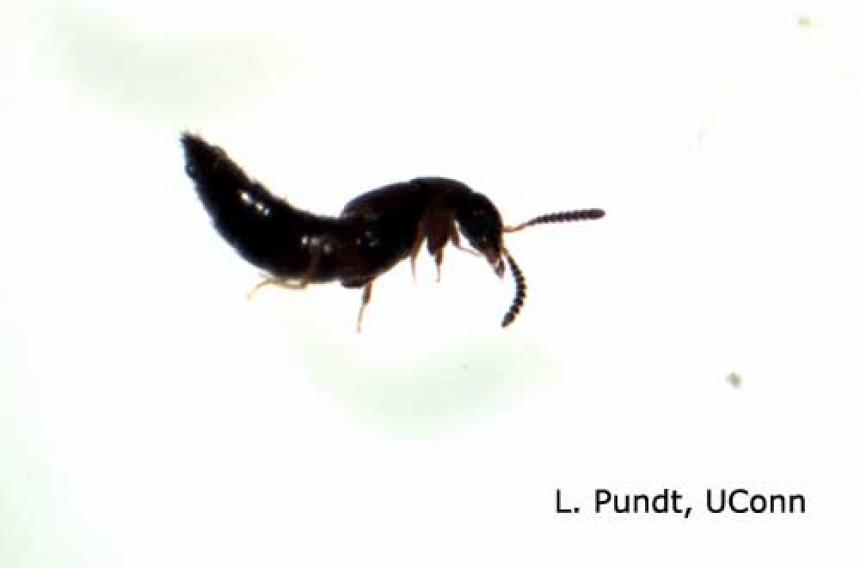Rove beetles (Atheta coriaria) are generalist predators that feed upon shoreflies, as well as fungus gnats, and thrips.
Adults are slender, dark brown to black hairy beetles, about 1/8 of an inch long, with very short wing covers. Because the adults can fly, this helps them disperse in the greenhouse. Larvae are cream colored to brown depending upon their age. Both stages are primarily found in the growing media, hiding in cracks and crevices. Once established in a greenhouse, they will be there year round, but population levels vary depending upon prey populations.
The life cycle of rove beetles from egg to adult is about three weeks at 77° F. Adult females lay approximately 8 eggs per day for the first two weeks after they mature. Eggs hatch in 3 to 4 days into creamy white larvae. (There are three larval stages after which they pupate.)
Rove beetles were first introduced as a biological control agent in 2002. More research and grower experience is needed to determine their effectiveness under New England greenhouse conditions. Because rove beetles are a generalist predator, they may feed upon beneficial species. For example, in one study, they fed upon eggs of a predatory mite, H. aculifer as well as pest eggs. Rove beetles consumed beneficial predatory mite eggs and very young nymphs. In addition, H. aculifer mites fed upon rove beetle larvae, especially the first instar larvae.
Rove beetles are commercially available as adults in either a tube or in a bottle with peat moss as the carrier (depending upon the amount ordered).
